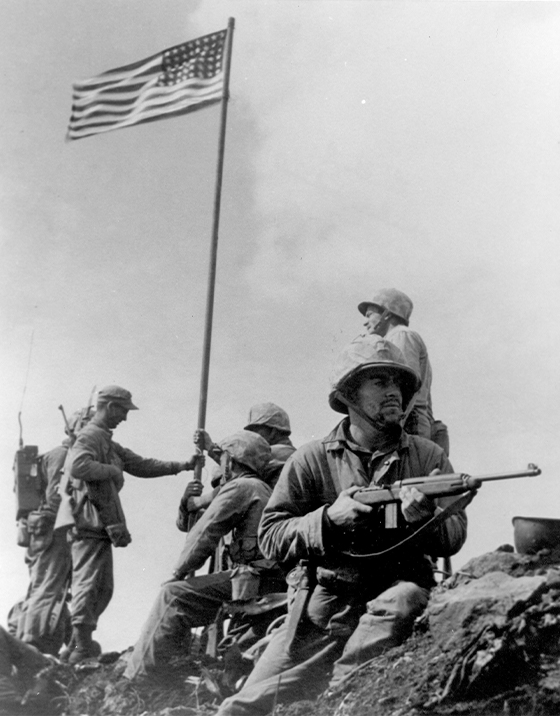The Battle for Iwo Jima
Graves B. Erskine
Major General, U.S. Marine Corps
In October 1944, Major General Graves Erskine assumed command of the 3rd Marine Division and led it during the hard-fought campaign on Iwo Jima in February and March 1945. Through his brilliant, skillful and inspiring leadership, he kept his division in the forefront of the assault, finally breaking through to the north coast of the island, thereby splitting the enemy into two groups. His dynamic force and personal courage were in great measure responsible for the success of 3rd Division and the entire operation.
This was not Erskine’s first war and would not be his last. One of the greatest Marines, Erskine, a native of Columbia, Louisiana, graduated from LSU in 1917.
- Early Years
Serving during World War I, General Erskine received the Silver Star for his heroism at the battles of Bellau Wood and Saint Mihiel, where he was seriously injured. After the war, he was chosen to organize the Honor Guard that returned the body of the first Unknown Soldier to the United States from France aboard the USS Olympia.
- World War II
In World War II, Erskine was the youngest Brigadier General in the Corps. He became Chief of Staff and Deputy Commander of the Amphibious Corps (Pacific), planned the seizure of the Gilbert Islands (Tarawa) and accompanied the assault forces that took Kwajalein, Saipan and Tinian in 1944. It was in this post that he pioneered many of the doctrines for amphibious warfare that overwhelmed the enemy in the Pacific.
After the victory at Iwo Jima in February and March 1945, units of the 3rd Division were awarded the Presidential Unit Citation for heroism. Erskine was awarded the Navy Distinguished Service Medal.
- Korean War
During the Korean War, Erskine completed a mission for the State Department reporting on postwar Southeast Asian countries. He worked for the Secretary of Defense from 1953 to 1961 and entered the private sector after retirement. He died in 1973 and is buried in Arlington National Cemetery.
